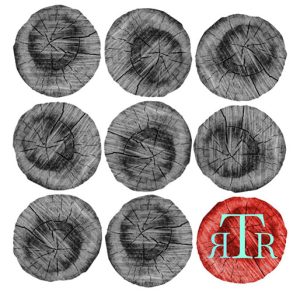Subtropics – Winter/Spring 2010
Issue 9
Winter/Spring 2010
Triannual
Karen Rigby
This special issue of Subtropics features over thirty translations from France, Japan, Russia, Spain, Romania, Argentina, Mexico, and other countries that interpret a variety of crossings. “Hazaran,” by nobel laureate J.M.G. Le Clézio, introduces a mysterious handyman and storyteller who leads his neighbors when they learn that the government plans to evict them from Frenchman’s Dyke, a shantytown populated by migrants. The story concludes with an exodus as one character, Alia, glances back at the darkened shore. Translation can inspire feelings of displacement, but at its best, becomes appreciable as confident work rather than as a shadow of the original.
This special issue of Subtropics features over thirty translations from France, Japan, Russia, Spain, Romania, Argentina, Mexico, and other countries that interpret a variety of crossings. “Hazaran,” by nobel laureate J.M.G. Le Clézio, introduces a mysterious handyman and storyteller who leads his neighbors when they learn that the government plans to evict them from Frenchman’s Dyke, a shantytown populated by migrants. The story concludes with an exodus as one character, Alia, glances back at the darkened shore. Translation can inspire feelings of displacement, but at its best, becomes appreciable as confident work rather than as a shadow of the original.
Noteworthy examples include the move from curiosity to obsession in “A Guide to Famous Stabbings” by Bernard Quiriny, a story about a man’s journey to join the “eclipsees” (writers who produce only one work and then renounce writing); the tension between a mother’s desire to protect her son and his freedom to choose his own future in Fumiko Enchi’s “Black Hydrangea”; and “the border between dream and sleeplessness” in “Another White Sea,” a poem by Alberto Blanco.
Poems are printed side by side in their original languages and in translation. The most ample selection contains six poems by Seyhan Erozçelik that employ the rose as a symbol. Several poems investigate similarly artistic subjects: color in Aleksandr Kushner’s “Here’s What I Envy”; Edward Hopper in two poems by Ernest Farrés; and ephemeral beauty in Chuya Nakahar’s “A Fairy Tale” and “Song for a Summer Day.” A few poems explore darker moments, such as “Three Hero Songs” by Gerrit Kouwenaar:
Count the feet, the footnotes, the art,
pace the put-out
wheelchairs in books, kiss
the down of the blood-young widows, cook
the feast of childflesh, lick
the sick of the rod, slap me with peace
to the all-seeing sightlessness.
Nearly all of the poems offer a change of pace – not in the touristic sense, which may initially focus on the simpler pleasure of hearing a range of voices, but in their breadth and frequently deft use of silence.
Stories include only the English, which may disappoint a few readers, but they retain a tactile quality, whether they detail realistic or imaginary scenes. It’s easy to assume that they capture the right spirit. In the words of Manoel de Barros, whose poem “The Book About Nothing” is also included, “It’s impossible for the mouth to be absent in language: no words stay abandoned / from the being that revealed them.”
[www.english.ufl.edu/subtropics/]




